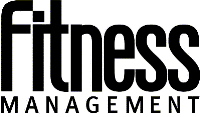
Now that we’re officially in a recession, and scores of people are cutting back on their finances, the New Year is upon us. What does this mean for the fitness industry at a time when the greatest jump in membership sales typically occurs? We’ve always been able to count on those New Year’s resolutions!
But, over the Thanksgiving weekend, as I was watching the Fox News channel, it became ever more clear that those New Year’s resolutions may not pay off for our industry this year. While interviewing shoppers about their spending plans for the Christmas holidays and beyond, more than one individual mentioned their fitness center membership as one of the items that would be eliminated as their belts were tightened. The gym expense is considered by these people as “discretionary spending.” Even USA Today reported that cash-strapped customers have cut spending on spas and gyms.
This is not the first blog the FM staff has written about how our industry is going to hold up during what seems to be a never-ending economic downward spiral. And we are far from the only ones taking a look at this issue. Each day, a new story appears in some city paper about the problems our industry is, or in some cases, is not, facing. During Thanksgiving week alone, articles appeared with the following titles: Fitness Centers Work Out Deals; Fitness Clubs Fight Unhealthy Economy; Gyms Weather Economic Storm. And, those are just a few examples.
What’s interesting is that many noted industry experts have claimed, and are still claiming, that the fitness facility industry is recession-resistant. But, is this true? In the above-referenced articles, many facility owners are saying that they are not being affected by the recession, yet many others are saying they are.
Unfortunately, economists are saying this is one of the worst economies we have seen in a long, long time — long before fitness memberships were a part of the American family’s budget. So, with times as hard as they are, it’s logical to assume that we’ll hang on to many members, but we’ll also lose others, and we certainly may not gain many new ones.
To survive, then, our industry needs to respond in a variety of ways. Many are discounting their services, whether that is wise or not. Others are providing guarantees. See the article, Personal Fitness Training Franchise Introduces Bold New Fitness Goals Guarantee.
But, perhaps the most important response we should consider is how we can change consumers’ perceptions of “fitness.” The main thing that should be stressed in our marketing and communications to the public is that fitness is a “necessity,” rather than a “commodity.” As the writer of the article, Fitness Clubs Fight Unhealthy Economy, states, our services need to be “touted as stress-reducers, not indulgences,” and we need to highlight the economic benefits of “wellness.”






























